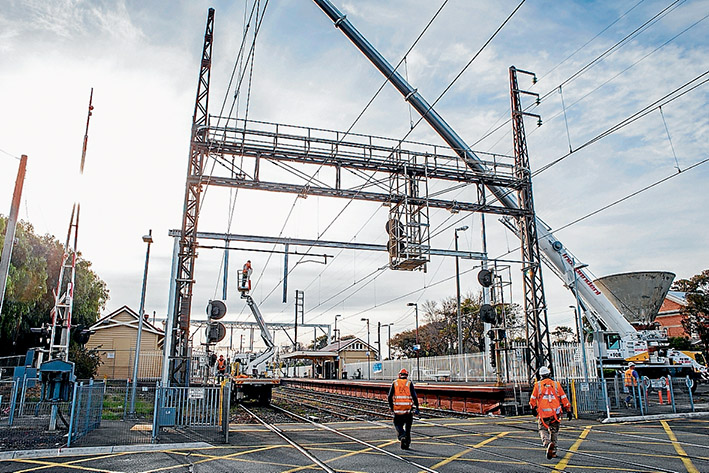
THE Labor state government’s pre-election pledge to remove eleven Frankston line level crossings will transform many suburbs along the rail line.
Many commuters and road users understand the separation of road and rail at crossings will ultimately reduce travel times but the look and feel of the suburbs around train stations will also be changed forever.
RMIT University lecturer on urban design Ian Woodcock says suburbs will be radically transformed after grade separations at rail and road intersections are complete.
“It leaves a very long legacy… the suburbs are going to look a lot different than what they do now.”
The office of the Victorian Government Architect released a two-page report last year, entitled Level Crossings Removals: Lessons Learned, which noted such projects should be “viewed as a catalyst for urban renewal” and planning should “establish a vision for the site that is broader than improving transport efficiency”.
Mr Woodcock believes elevated rail lines are a better option than a “road over rail” solution since the former effectively frees up land under the railway tracks for other uses.
“You can use the land for all kinds of stuff. You can create open public land there,” Mr Woodcock said.
“You can put shops around the station area and integrate it better with the neighbourhood. There’s potentially a huge public benefit with elevated rail at the right locations.”
The office of the Victorian Government Architect takes the opposite view. Its report, lodged as part of a Victorian Design Review Panel series, stated “lowering a section of the rail corridor under an at-grade road is the most supportable solution in most circumstances”.
The Level Crossings Removals: Lessons Learned report found an elevated road of rail structure is “often a cheaper solution” but “will have a significant physical presence and impact on a place”.
Mr Woodcock said the digging of trenches to lower railway tracks disrupts habitats and can cause problems with waterways.
“I don’t think construction costs are really the issue. What everyone should be arguing for is the best overall outcome for all concerned.”
A triple social, economic and environmental cost-benefit analysis would show “it is better overall”, according to Mr Woodcock.
The RMIT lecturer says elevated rail may not be possible at all level crossing sites.
Last month the Andrews government awarded the contract to remove the first three level crossings along the Frankston line – at Bentleigh, Ormond and McKinnon – and a spokesperson for Transport Minister Jacinta Allan said the rail line will be lowered at all three sites.
Train stations will be rebuilt to give pedestrian access down to the platforms.
The type of level crossing removal at the other eight Frankston line sites have not yet been decided.
“The best way to remove a level crossing depends on a number of factors including the geography of the local area, surrounding infrastructure, and the needs of the local community,” the spokesperson said.
“We will work closely with the residents, businesses and construction contractors to determine the best way to remove these level crossings and make these communities safe, less congested and better places to live and work.”
The state government has promised to remove 50 level crossings across Victoria’s rail network within eight years with 20 to be gone within four years.
The eleven Frankston line crossings to be removed are: North Rd (Ormond), Balcombe Rd (Mentone), Centre Rd (Bentleigh), Charman Rd (Cheltenham), Edithvale Rd (Edithvale), Eel Race Rd (Carrum), McKinnon Rd (McKinnon), Seaford Rd (Seaford), Skye Rd (Frankston), Station St (Bonbeach), Station St (Carrum).

1 Comment
Whichever way they decide they will need to keep it consistent along the whole Mordialloc to Carrum stretch otherwise it will be like a roller coaster.
Personally I cant see anything apart from it being a raised track along the whole stretch.
Digging under will be way too expensive especially with the problem of seepage from the nearby bay.
Either way they should just do every intersection along there rather than some half-arsed solution.
As mentioned it could become a nice social space with the right development with cafes, bike paths and green space
And please make sure it has room for an extra line so this never has to be visited again.